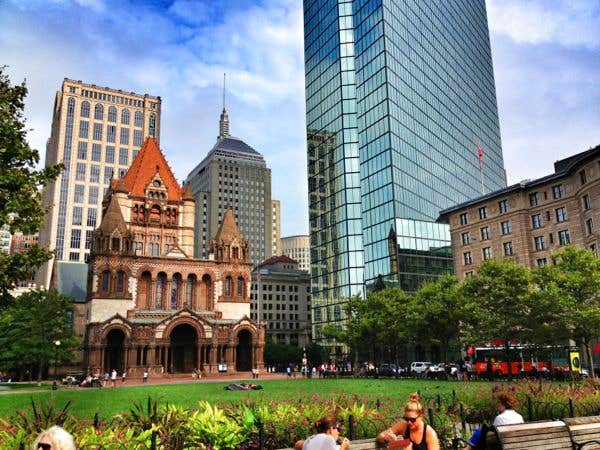
Clem Labine
Architecture’s Invasive Species
Many of us are dismayed to see the flood of anarchic buildings swamping America’s older communities – often with the blessing of local preservation boards. Apparently it’s now conventional wisdom that architecture should reflect the disruption, distortion and disorder that infects the modern world. To counter this repellent trend, let’s try borrowing a concept from environmental activists.
Ecologists have convinced the public that “invasive species” are a bad thing. The term describes non-indigenous flora or fauna that have an adverse impact on the natural habitat they invade. And as my neighbor and preservation activist John Casson explains, the architectural eco-system of America’s older communities face equally adverse impacts from “invasive architecture.” By that he means architecture that purposefully contrasts sharply with older traditional buildings surrounding it. John has been particularly distressed by numerous provocative and adversarial buildings that are invading our older Brooklyn neighborhoods. (See first photo.)
Modernist architects often attempt to deflect criticism of these alien buildings by asserting that they are indeed “contextual.” “We’ve established a dialog between old and new,” the architect will artfully explain, “thus our design is totally context-sensitive.”
Of course, what the architect’s rhetorical trick really means is: “I’m using the surrounding historic buildings as a foil to create shock value for my new building. In the context of modern Hong Kong my building would be totally ho-hum.”
Invasive Architecture
A vivid example of invasive architecture’s negative impact was provided to me while in Boston to attend the Traditional Building Conference. During a tour of historic Copley Square, I stood on the front steps of Charles McKim’s magnificent Boston Public Library looking out over the superb urban landscape before me. To the left was the Gothic splendor of Old South Church. Directly across the square was Richardson’s exquisite Trinity Church. To my right was the stately beauty of the Copley Plaza Hotel.
But the eye did not dwell on the agreeable ensemble of traditional buildings that enclose the square. Instead the eye was drawn inexorably to the Brobdingnagian height of the all-glass John Hancock Tower that looms 790 ft. over the square, like an ungainly cornstalk that’s invaded a carefully tended lavender bed. The eye focuses on the disruption, not the adroitly balanced composition. Thus does the invasive species contaminate an entire architectural eco-system. The John Hancock Tower bears silent witness to the triumph of money and political power over rational urban planning.
The way invasive architecture despoils the special character of a locality is fully explored in Steven Semes’ seminal volume, The Future of the Past. In his book, Semes shows how intact ensembles of traditional buildings are people-magnets because such areas possess the beauty and harmony that most of us find emotionally satisfying. When invasive architectural shapes disrupt local special character, part of that unique architectural eco-system is killed and the area moves one step closer to anonymous modern Shanghai.
If we can convince our fellow citizens to think of older communities as fragile architectural ecosystems, then perhaps there will be more resistance to the menace of invasive architecture.
Clem Labine is the founder of Old-House Journal, Clem Labine’s Traditional Building, and Clem Labine’s Period Homes. His interest in preservation stemmed from his purchase and restoration of an 1883 brownstone in the Park Slope section of Brooklyn, NY.
Labine has received numerous awards, including awards from The Preservation League of New York State, the Arthur Ross Award from Classical America and The Harley J. McKee Award from the Association for Preservation Technology (APT). He has also received awards from such organizations as The National Trust for Historic Preservation, The Victorian Society, New York State Historic Preservation Office, The Brooklyn Brownstone Conference, The Municipal Art Society, and the Historic House Association. He was a founding board member of the Institute of Classical Architecture and served in an active capacity on the board until 2005, when he moved to board emeritus status. A chemical engineer from Yale, Labine held a variety of editorial and marketing positions at McGraw-Hill before leaving in 1972 to pursue his interest in preservation.









